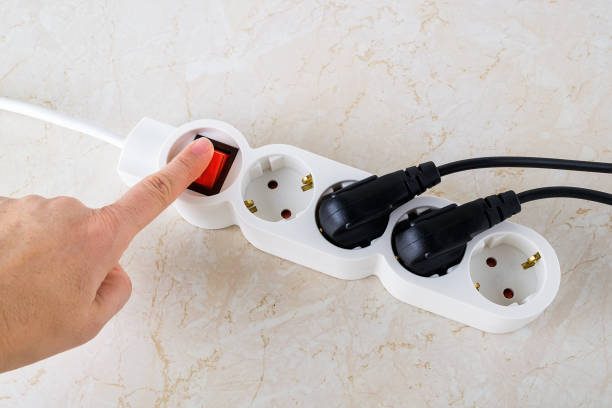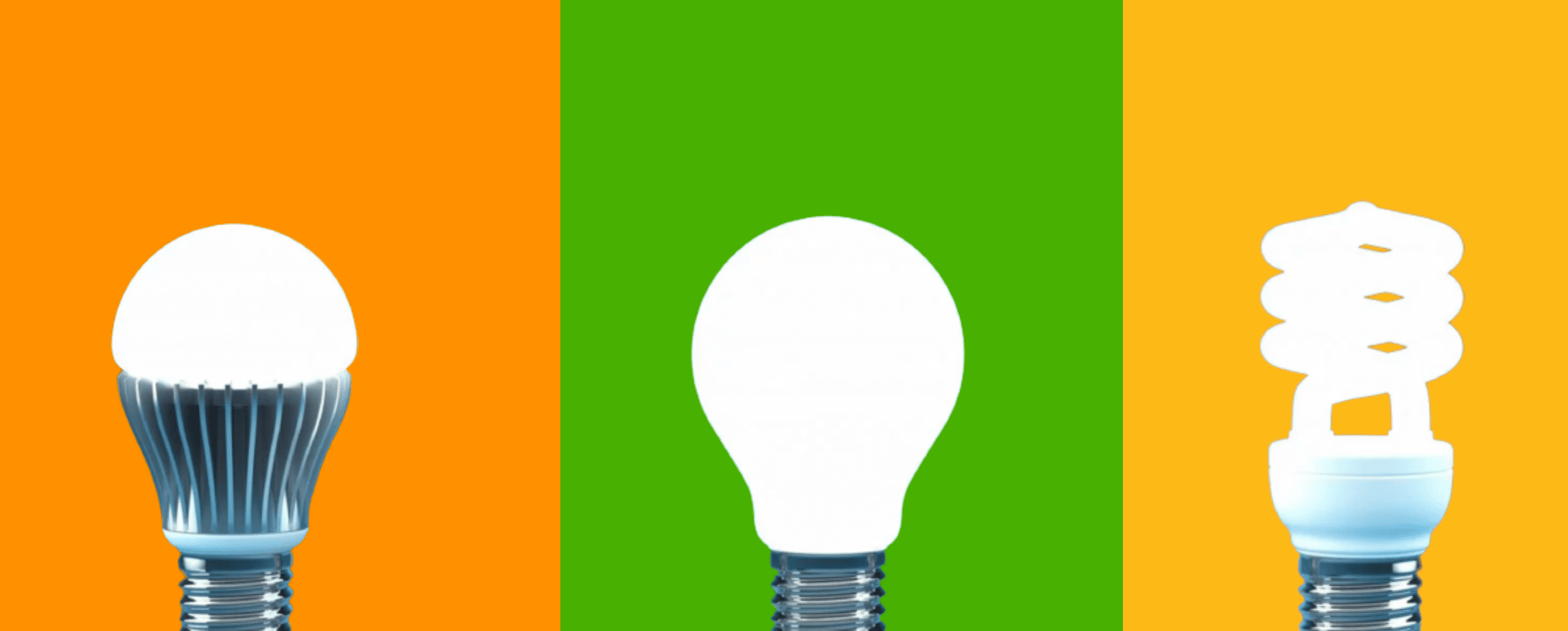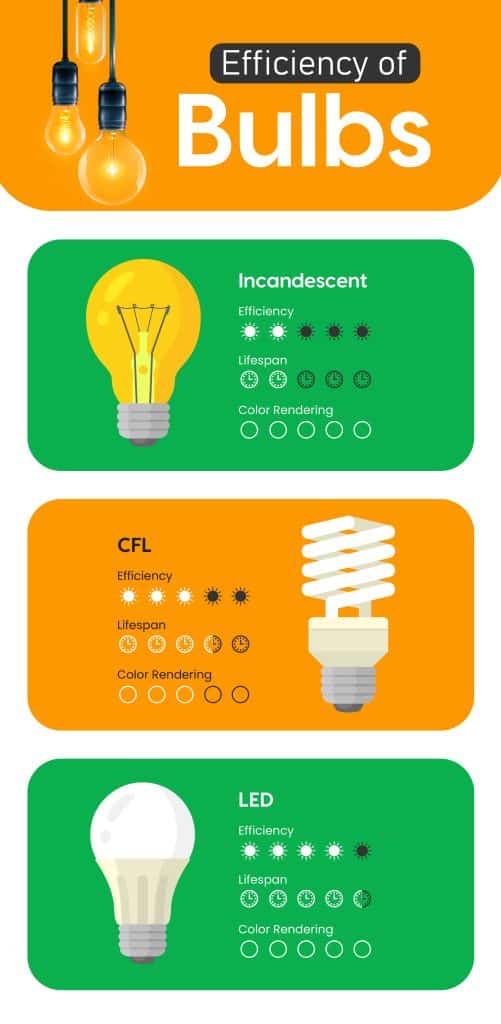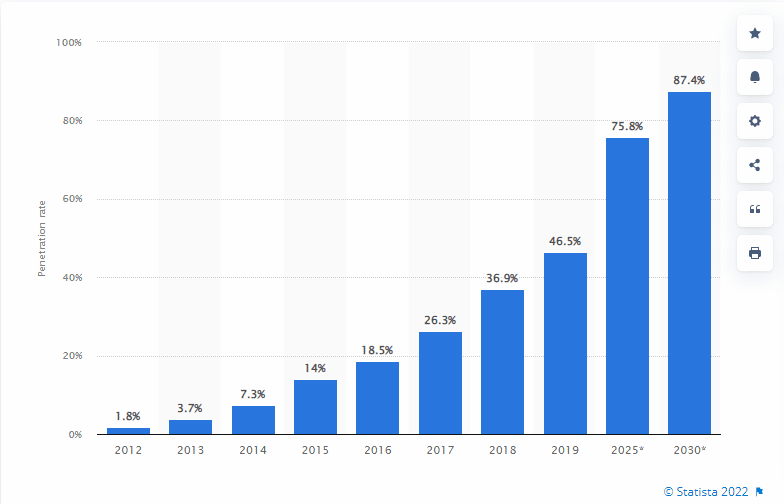
Explore common reasons why LED lights won’t turn on, from faulty wiring and incorrect installations to dead bulbs and power […]

Incandescent Vs. CFL Vs. LED – There are a lot of different types of light bulbs on the market these days, and it can be hard to know which one is right for you. Here is a quick comparison of incandescent, CFL, and LED bulbs to help you make the best decision for your needs.
Modern technology has given us so many options when it comes to equipment and electronics, and lightbulbs are no exception. If you’ve ever found yourself in a hardware store in the middle of the lighting aisle, you’ll know the feeling of uncertainty over what bulb to choose for your home or commercial property as you’re presented with a myriad of endless lightbulb options.
Until recently, incandescent lightbulbs were the only choice available for many decades. While their familiarity can be tempting to a buyer, fewer consumers are choosing to use these types of lightbulbs as the research shows they are inefficient and not cost effective when compared to the other more modern lightbulb options.
LED Brilliance Starts Here, Just $33. Shine Brighter, Save More!
Our Team of Experts Will Guide You Through The ESS Lighting Upgrading Process To Ensure You Achieve The Most Effective Energy Efficient Improvement Possible, GUARANTEED!
A Brighter Home, A Brighter Future!
Should you go with the compact fluorescent lamps (CFL) which have improved in light quality and effectiveness recently? Or, should you choose the light emitting diodes (LED) bulb which has become the popular bulb of choice that many buyers find themselves reaching for these days?
While it may be confusing to remember the differences between these bulbs by name, they each have a distinctly unique appearance that can be helpful to distinguish one from the other.
Incandescent bulbs have the classic tapered bulb shape that most people know, and they are made of clear glass all around. CFL bulbs consist of an opaque spiral that twists upwards, while LED bulbs are similar in shape to the incandescent bulb but have opaque glass.
Also Read: 11 reasons to switch to LED lights in 2022
Choosing the right bulb can have a huge impact not only on the indoor temperature and feel and the overall clarity and brightness, but also on your electricity bills as the amount of heat that a bulb emits can affect your air conditioning.
With so many facets of lighting to consider, let’s get into the nitty-gritty about which option is the best and why!
Here are the important points of comparison that we’ll be breaking down and using to rank the incandescent, CFL and LED bulbs:
To talk about brightness and compare these three bulbs, it’s important to understand what lumens are and how they differ from watts. Lumens are a measure of brightness, while watts are a measure of energy.
The higher the lumen is, the brighter the bulb will appear, and this applies to all lightbulbs, no matter what type they are. Ultimately as a consumer, you want a bulb that will give you maximum lumens with minimum watts so that your bulb is as bright yet as cost effective as possible.
Nowadays you can easily find the lumen output of a bulb on the front packaging, whereas in the past it was more common to find the wattage. Considering how bright you want your bulb to be will help you decide what to buy.
In short, all bulbs can have the same brightness, but the important question is how many watts are needed to achieve that brightness. This is what determines how effective a bulb is in terms of the amount of light it’s emitting.
If we look at incandescent bulbs first, this type of bulb needs 40 watts of energy to produce 400-500 lumens. That may not sound like much, but it quickly adds up! Incandescent bulbs are known to emit a soft, warm tone of light that many people prefer in their private homes, however this is no longer distinct to incandescent bulbs as technology now allows competitors to achieve the same warm tone that many consumers desire.
CFL’s rank better than incandescent bulbs in terms of the number of watts needed to product 400-500 lumens. For this, they require nearly a quarter of the number of watts needed by incandescent bulbs, where between 8 to 10 watts are needed which is much better.
Also Read: 10 real benefits of LED lights for your home and business.
When CFL’s first came onto the market they gave off a harsh, cold light that was not appealing to many consumers as it altered colours and made them appear less vibrant that in natural lighting. However, in recent years this has improved, and today you can find CFL bulbs in a variety of tones and shades from bright white to warm yellow.
Lastly, let’s take a look at LED lights. Like CFL’s, these are drastically better than incandescent bulbs in terms of brightness to wattage ratio. They even manage to outrank CFL’s as only 6-7 watts are needed for 400-500 lumens.
Some years ago, LEDs were not the favorite in terms of lighting quality based on the type of lighting (lamp vs. ceiling) as they didn’t offer as broad a light coverage as the CFL did. This is no longer the case as LEDs have advanced in technology and design and now compete with any other light on the market in terms of the range of light omitted.
Like brightness, when evaluating the lifespan of a bulb we must consider wattage and lumens to truly determine what makes the best bulb. In general, if a bulb uses less wattage to achieve brightness, then it tends to have a longer lifespan.
A longer lifespan is beneficial for multiple reasons. It’s good for our wallets of course, because it means consumers need to purchase bulbs less frequently. With less bulbs to purchase yearly comes the convenience of having to make less trips to the hardware store as well.
Lastly, there’s the positive impact on the environment of producing less waste . The less bulbs we change, the less waste we produce, and the less glass and plastic ends up in our landfills. Overall, having a bulb with a longer lifespan is a win-win situation.
Let’s look at how incandescent bulbs rank in terms of lifespan. The average traditional 60W incandescent bulb will last about 1,200 hours. While it may seem like a high number, that’s less than one year’s worth of usage.
Replacing your bulb once or twice a year doesn’t sound like a huge task but when compared to its competitors, it’s the shortest bulb lifespan by a long shot.
If we compare the incandescent bulb to the CFL bulb, we can see a big difference in terms of how long one will last. One CFL bulb will last more than six times as long as the incandescent bulb with an average lifespan of about 8,000 hours.
Also Read: 10 benefits of LED lights over traditional lightings
This means that with regular use, you will only need to replace your CFL bulb about every six and a half years or so. That leads to less trips to the store and less bulbs in the landfills.
Lastly, if we compare both the incandescent bulb and the CFL bulb to LED lightbulbs, there is a clear winner. LED bulbs outlast the others in lifespan by surviving almost twenty times longer than incandescent bulbs and more than three times longer than CFLs.

One LED bulb will last for 25,000 hours, so this means that with normal usage, you will only need to change your LED bulb every twenty years or so! This is a huge difference compared to the incandescent bulb and a great improvement over CFL bulbs as well.
Twenty years is enough time to almost forget entirely that changing your lightbulbs is even necessary, and it’s an overall massive reduction of the number of bulbs you will go through in your entire home if you only use LED bulbs.
When it comes to cost, it helps to compare long term total amounts spent and consider how often a bulb will need to be replaced, instead of just looking at upfront costs per bulb. While LED bulbs are priced higher, with CFLs pricing in the middle and incandescent bulbs being the cheapest, the long-term costs are different when we consider how often your bulb will need to be changed.
The lowest price doesn’t equal the best efficiency or longevity and these two factors play a big role in determining the average overall cost of a bulb. For a more accurate picture, it will be helpful to compare all three types of bulbs over a twenty-year period to calculate the overall running cost and dollar amount of bulbs needed.
Looking at incandescent bulbs first, the average one will set you back only about $1 US per bulb. It’s the cheapest type of bulb available in terms of upfront cost. However, this becomes a very different outcome when we examine how many bulbs will be needed over a longer time span, as well as the electricity cost of running an incandescent bulb.
We know that one incandescent lightbulb will last for almost a year. On top of that, a rough estimate of electricity costs over a twenty-year period would be $190 US. This would give a total cost of $211 US over twenty years if incandescent bulbs are used.
Compared to the CFL bulb, the average price of one CFL bulb is double that of an incandescent bulb, at around $2 US. But, remembering that they generally last longer, they will need to be replaced much less frequently than the incandescent bulb.
Since CFL bulbs will only need to be replaced around every six years, this reduces the long-term costs and even more so if we take into consideration the electricity costs as well. Looking at a twenty-year period, we would need at least three bulbs for a total cost of $6 US.
Paired with the electricity cost over this period which are roughly $48 US, the total cost for CFL bulb expenditure over a twenty-year period is approximately $54 US. This is a significantly lower than the incandescent counterpart.
It gets even better if we look at LEDs. These efficient and long-lasting lightbulbs come out on top in terms of cost, despite being the most expensive type of individual bulb available. One LED lightbulb will set you back roughly $4 US. But remember that they pack a punch and will stay intact with regular usage for potentially over twenty years!
Looking at a twenty-year lifespan, data suggests that the electricity costs of running an LED bulb is as low as $30 US. Coupled with the long lifespan of a bulb, you’re looking at a total spend of $34 US for every twenty years with an LED bulb.
The proof is in the numbers when it comes to cost with these three options. LEDs will not only save you much of the headache and trouble involved in constantly having to replace your bulbs – which in turn equals less dollars spent on bulbs- but they will also result in less dollars spent on your electricity bill as they are efficient as it gets currently.

When comparing these three bulbs, it is obvious that LED is the clear winner. It’s no surprise that the bulb with the latest technology is the high-ranking supreme in multiple categories. LED lightbulbs have by far the longest life span, excellent brightness for low wattage and are overall the bulb that will give you the most bang for your buck.
Upgrade Your Halogen Downlights To Energy Efficient LED Downlights Under The NSW Energy Savings Scheme And Slash Your Energy Bills Today! Complete LED Lighting Upgrade From As Little As $33.
Upgrade Your Home for $33 and Up!. Don’t Wait Act Now!
As technology advances, there are more options with LED lights in terms of a variety of colours (cool tone vs warm tone), and it is projected that within the next decade it is the bulb that most people will have in their homes.
This chart breaks down the yearly percentage of LED lights in usage and estimates that by 2030 the penetration rate within the global lighting market will top 87%. The future looks bright for LED bulbs!
